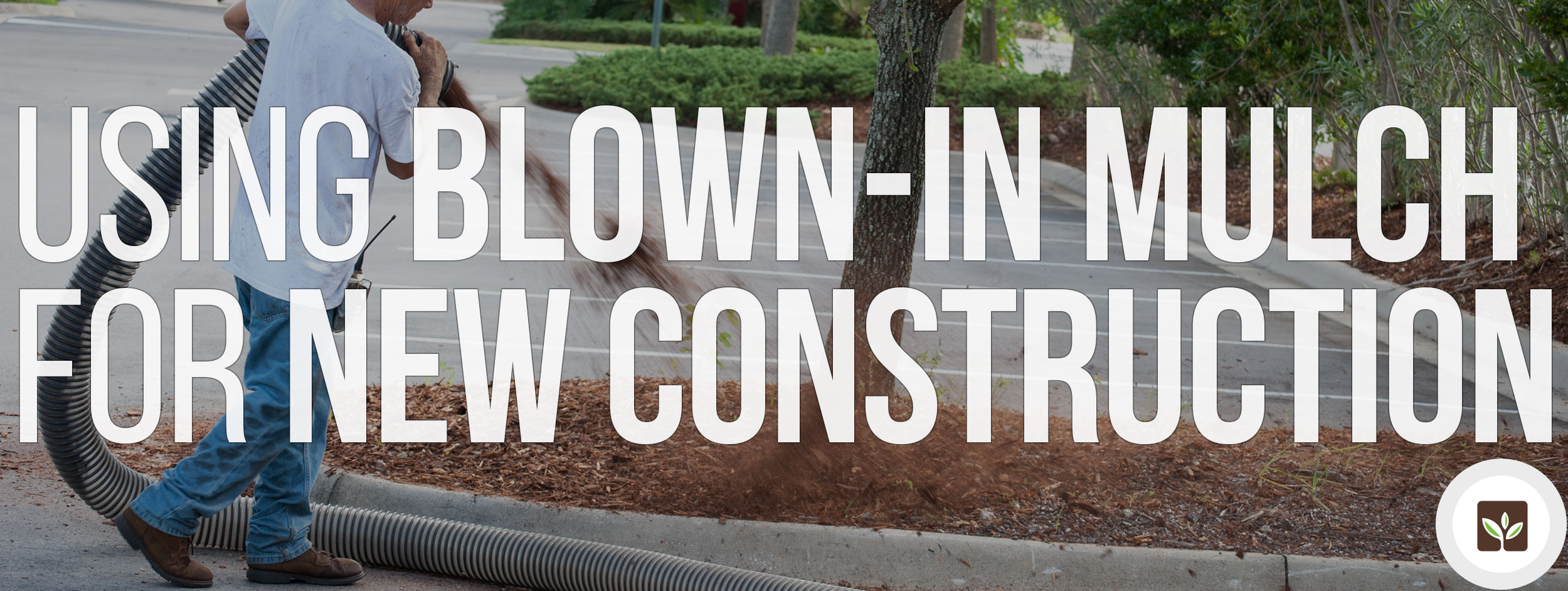
Using Blown-In Mulch for New Construction
Blown-in mulch is useful in the landscaping of new construction sites, especially for new residential neighborhoods, apartments and condos. It is particularly effective during rainy seasons when soil and seed are easily washed away.
“Mulch covers the soil and absorbs the erosive impact of rainfall and reduces the flow velocity of runoff”, according to state guidelines from the Wisconsin Department of Natural Resources. Use blown-in mulch on “exposed soil when grading is finished and when seeding is complete.”
New construction landscapers find that contracting for blown-in mulch saves them money and provides a far superior protected landscape than the traditional hand-spreading method. This is a long-lasting temporary control measure that is basically in place to stop soil erosion but is also helpful when the carpet is installed in new buildings.
Mulch provides a covering for grass that’s been seeded into the bare soil that will eventually take over the majority of the erosion control. This is sometimes used before buildings are put up or on sites where no building is planned.
Our North Carolina mulch installation companies uses mulch blowing trucks or trailers to provide a mulch covering on our large, important commercial projects. Contact us to install mulch on your new construction areas. N.C. State guidelines require that 85 percent of the ground is mulched.
Mulch Materials
Guidelines call for “natural biodegradable material”, such as “wood chips, bark and wood cellulose fiber”.
Our installers provide materials that are most appropriate for the situation. Ask us about material that is of proper dimensions and quality. Our installers are well aware of the importance of following state guidelines. Our installers use mulch that is certified, and IPEMA and ADA compliant. It is free of twigs and sticks.
N.C. developers are required to mulch construction sites for reduction of erosion and for the seed to become established. Blown-in mulch is the most effective of the allowed methods. Ask us about mulching your new construction site.
Preparing the Slope
Erosion control is most necessary on sloped land, although flat land will erode too and benefits from the erosion control treatment. Preparation of the ground must be completed before planting seed and mulching. The ground should be broken up and all rocks and tree roots removed.
A soil test for pH may be necessary to learn the proper amendments you’ll include in the soil. Keep the seedbed tight with soil finely packed before planting the seed. This helps prevent the seed washing out, as does the covering of blown-in mulch.
When the ground is in shape, apply lime if needed, along with seed and fertilizer. Selection of a mulch depends on how steep the slope is and how long it needs to remain. The longer the mulch needs to stay on the area, the more expensive it will be.
Blown-in mulch can be applied without the applicator standing on the slope, which is helpful for large and steep hills. No netting is involved with blown-in mulching, so there is no concern for wildlife becoming trapped, as sometimes happens with erosion control blankets.
Choosing a mulch type for an erosion control situation also offers the ability to add ingredients to expand coverage or further reduce erosion. Ask us about additives and which type of mulch is most appropriate for your situation.
Our installers and mulch suppliers offer a wide selection of mulches. Ask your professional installer when they stop by. They’re happy to explain what will work and schedule a mulch delivery and application time.
Blown-in mulch is applied more quickly than using the method with wheelbarrows and laborers. Many customers experience a 20 to 30 percent savings when using our leading-technology method.
We’ve eliminated the need to search for a mulch company. It is simple to learn more about the installation of blown-in mulch for your erosion control issues.